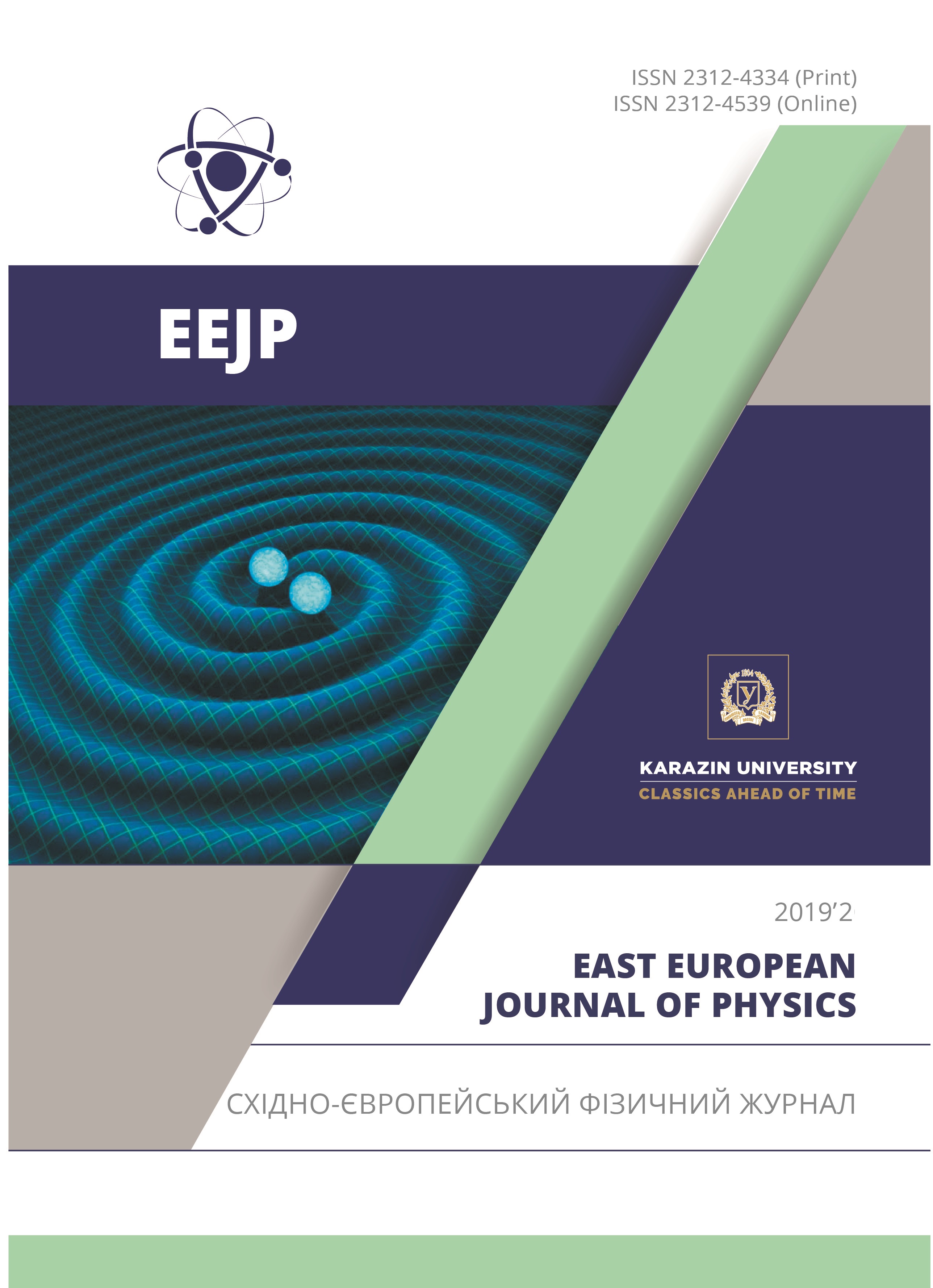Solubility of Boron and Carbon in Ferrite of the Fe-B-C System Alloys
Abstract
Investigation was carried out for Fe-B-C alloys with carbon content of 0.0001–0.01 % (wt.) and boron content of 0.0001–0.01 % (wt.), the rest is iron. To determine the structural state of alloys we use the microstructure analysis, X-ray microanalysis and X-ray structure analysis. The level of microstraines, dislocation density and the coercive force of ferrite is determined, and it is shown that structure imperfection grows with boron content increase in the alloy. The obtained results enable to suggest that boron atoms in a solid solution of α-iron occupy substitutional-interstitial positions depending on boron content. In the paper it is shown experimentally, that at room temperature solubility limit of boron and carbon in the ferrite is 0.00012 % (wt.) and 0.006 % (wt.). When boron and carbon content increases further, the following phases are formed: Fe2B, Fe3(CB) and Fe23(CB)6. In this paper by means of quasi-chemical method we obtain for the first time temperature dependence of the free energy for α-iron solid solution, as well as solubility limit of carbon and boron. Maximum mass fraction of carbon may be up to 0.016 % (wt.), and maximum boron mass fraction – up to 0.00025 % (wt.). At room temperature the boron solubility limit in ferrite is 0.0001 % (wt.), and carbon one is 0.004 % (wt.). The calculated numerical values of the solubility of boron and carbon in ferrite of the Fe-B-C system alloys are less than that of the experimental results. This can be explained by the fact that boron atoms interact more actively with structure imperfections than carbon atoms. At high temperatures the solubility of carbon and boron in given phase increases.
Downloads
References
N.P. Lyakishev, Yu.L. Pliner and S.I. Lappo, Борсодержащие стали и сплавы [Boron-bearing steels and alloys] (Metallurgiya, Moscow, 1986), p.191. (in Russian)
A.E. Vol, Строение и свойства металлических систем [Structureand properties of binary metalsystems], (Fizmatgiz, Moscow, 1959), p. 856. (in Russian)
O.A. Bannykh and M.E. Drytsa, Диаграммы состояния двойных и многокомпонентных систем на основежелеза [Phase Diagrams of Binary and multicomponent Systems based on of the iron: Handbook], (Metallurgiya, Moscow, 1986), р. 439.
Yu.B. Kuzma and N.F. Chaban, Двойные и тройныесистемы, содержащие бор: Справочник [Boron-bearing binary and ternary systems], (Metallurgiya, Moscow, 1990), р. 317. (in Russian)
N.P. Lyakishev, Диаграммы состояния двойных металлических систем: Справочник [Phase Diagrams of Binary Metal Systems: Handbook], (Mashinostroenie, Moscow, 2001), p. 498. (in Russian)
A.P. Huliaev and A.A. Huliaev, Металловедение [Metalsscience] (Midalliance, 2011), p. 644 с. (in Russian)
B.N. Arzamasov, V.Y. Makarova and H.H. Mukhynandetc., Металловедение [Metalsscience] (Moscow, BMSTU, 2001), p. 648. (in Russian)
S.V. Tverdokhlebova, Vìsnik Dnìpropetrovs’kogo unìversitetu. Serìâ Fìzika, radìoelektronìka, 14(12/1) 100 104 (2007). (in Russian)
O.Yu. Bereza, N.Yu. Filonenko and O.S. Baskevich, Physics and Chemistry of Solid State, 13(3), 968-973 (2012).
N.Yu. Filonenko and І.M. Spiridonova Physics and Chemistry of Solid State, 10(3), 609-612 (2009).
N.Yu. Filonenko, O.S. Baskevych and V.V. Soboliev Journal Scientific Bulletin of National Mining University, 4, 74-78 (2012).
M.P. Shaskolskaya, Кристаллография [Crystallography], (Vysshaya Shkola, Moscow, 1984), p.376. (inRussian)
Iu.S. Nechaev, Advances in Physical Sciences, 181(5), 493-490 (2011).
Z.A.Matysina and M.I. Milyan Теория растворимости примеси в упорядоченных фазах [Solubility theory residual element in orderedphase]. (DGU, Dnepro, 1991). p.180.(in Russian)
V.H. Havrylova, Y.F. Tkachenko and A.V. Belostochnyi, Reporter of the Priazovskyi State Technical University. Section: Technical sciences, 18, 90-95 (2008).
Authors who publish with this journal agree to the following terms:
- Authors retain copyright and grant the journal right of first publication with the work simultaneously licensed under a Creative Commons Attribution License that allows others to share the work with an acknowledgment of the work's authorship and initial publication in this journal.
- Authors are able to enter into separate, additional contractual arrangements for the non-exclusive distribution of the journal's published version of the work (e.g., post it to an institutional repository or publish it in a book), with an acknowledgment of its initial publication in this journal.
- Authors are permitted and encouraged to post their work online (e.g., in institutional repositories or on their website) prior to and during the submission process, as it can lead to productive exchanges, as well as earlier and greater citation of published work (See The Effect of Open Access).








